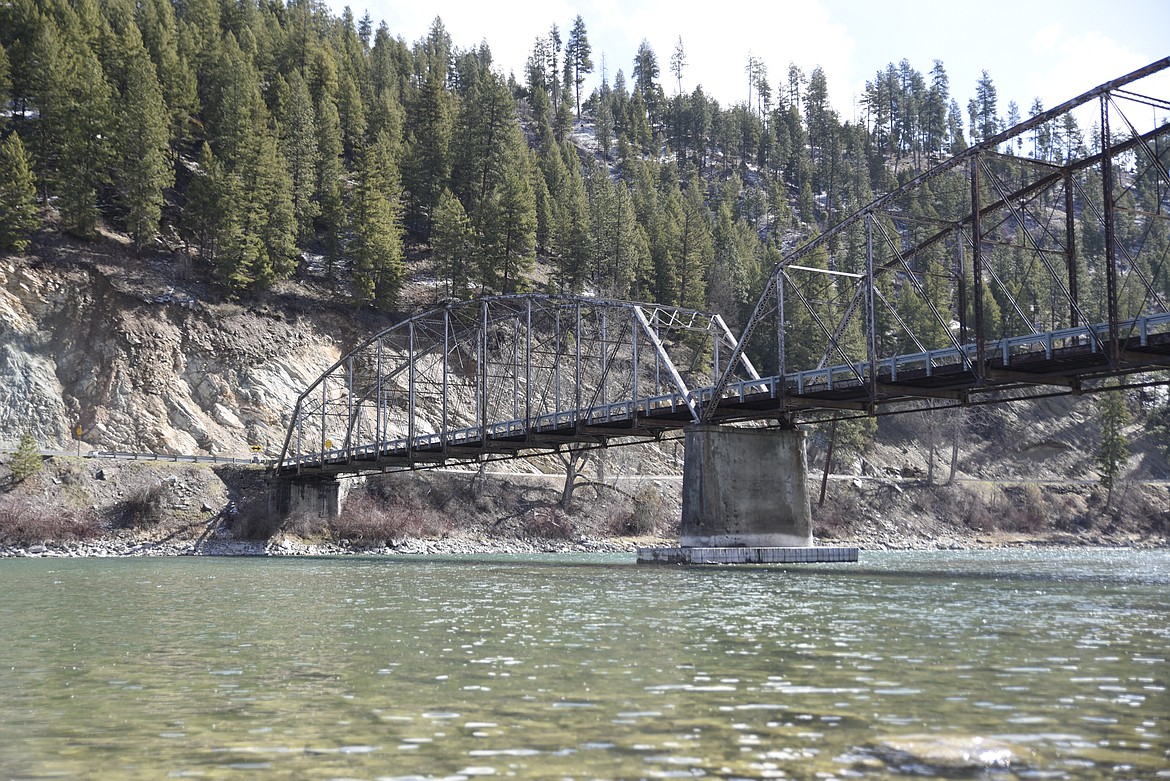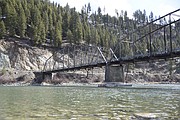Local lawmakers question new selenium standards
Local elected officials want more information about new regulations for a heavy metal that is leaching into Lake Koocanusa and the Kootenai River from upstream Canadian mines.
The Montana Department of Environmental Quality’s Board of Environmental Review approved updated selenium standards during a Dec. 11 meeting. While significantly more restrictive than those applicable to most Montana bodies of water, the new levels corresponded with federally advised standards and methods of approving site-specific standards, according to DEQ documentation.
Minute levels of selenium are essential for animals and certain plants, but DEQ officials report that — at elevated levels — it can adversely affect a broad range of aquatic life. As the metal travels up the food chain and becomes increasingly concentrated it can compromise the reproduction of certain species of fish.
During a Dec. 16 meeting, Lincoln County Commissioner Josh Letcher (D-3) asked EPA representatives about the agency's role in overseeing the adoption of the new standards.
Deb Thompson, deputy regional administrator for EPA Region 8, said the federal agency would conduct a review of the levels approved by the state. Under the Clean Water Act, the EPA is required to approve revised water quality standard submittals within 60 days of submission or disapprove within 90 days. At the time of the meeting, Thompson said the state had not yet submitted their updated standards to the EPA regional office.
Darcy O’Connor, water division director for EPA Region 8, said that, based on the short time frame for their action, EPA would not consider additional comments when reviewing the science used by DEQ to justify the new standards.
As far as enforcement of the standards, O’Connor, said the responsibility would fall to DEQ.
Considering that the source of selenium in the reservoir and river comes from upstream coal mines operated by Teck Resources in British Columbia, Letcher asked if the EPA would work with Canadian officials to ensure the standards are met.
Bert Garcia, deputy water division director at EPA Region 8, said that neither DEQ nor the EPA could enforce the standard internationally.
“What it does is Canada and British Columbia would see the standard is set across the border,” said Garica.
State Sen. Mike Cuffe (R-Eureka), raised concerns during the meeting that new standards would lead to Lake Koocanusa being listed as an impaired body of water. The new selenium standard for the lake, which is set at 0.8 microgram per liter, is below the annual average recorded in the reservoir.
Garica said that it was up to the state to determine if the lake is to be listed as an impaired body of water. The new standards would need to be finalized before DEQ can initiate the process, according to Garica.
Cuffe, along with other local officials, worry that if Lake Koocanusa ended up listed as an impaired body of water, it could have significant repercussions for the local economy.
“How does this thing get used,” Cuffe asked. “Is this not going to be another objection point — another hoop — for any logging job to jump through, a hoop to jump through if someone wants to build another bridge, a road, a housing development, any kind of commercial development, a gravel pit?”
Considering that the new standard would not give local authorities control over selenium released in Canada, Letcher likewise encouraged EPA officials to strongly consider how the new standards would impact the county.
Commissioner Mark Peck (D-1) said that, while he and other Lincoln County officials wanted to see the reservoir and river protected, the local economy has suffered under what he termed “overreaching, well-intended environmental rulings such as this.”
“It’s not the agency's problem but it’s how it's used through litigation, through serial litigating environmental groups using it to shut down our economic vitality,” he said.
Peck noted that Libby is only just beginning to move past its notoriety as an asbestos Superfund site.
Commissioner Jerry Bennet (D-2) expressed similar views during a Dec. 11 Troy City Council meeting. Worried that it could take years to return the lake to a healthy condition if it were listed as an impaired body of water, he said the new standards could significantly impact local recreational industries.
“What does that mean to our fishing guides on the river as they put out advertisements for people to come out here and fish?” he asked. “We don’t need one more industry impacted.”
Bennett and Cuffe have advocated for more legislative involvement in the process and have asked for more research before setting the standard.
In October, state representatives and senators on the Water Interim Policy Committee met to discuss the new standards. According to Cuffe, the committee voted 5-5 to delay the process. The tied vote allowed BER to take action on the new standards without additional legislative input.
State Rep. Brad Hamlett (D-Cascade), a committee member who opposed the delay, has since switched his stance. He is asking for more evidence to justify the selenium standard for Lake Koocanusa. Cuffe cited Hamlett’s reversal as an indicator that lawmakers are not yet convinced that the updated standards are scientifically justified.
O’Connor emphasized the updated standards are parameter specific. If state officials were to list the lake as an impaired body of water, it would only be in regards to selenium. Thus only commercial activities that contribute to selenium levels in the lake could be regulated by the standard.
Already, state and federal agencies have spent years studying the issue. Starting in 2014, Montana and British Columbia officials formed the Lake Koocanusa Monitoring and Research Working Group to address transboundary water issues.
The group identified selenium as their highest priority and formed the Selenium Technical Committee to gather data and determine a protective standard. Experts from the EPA, U.S. Army Corps of Engineers, Montana Fish, Wildlife and Parks and the U.S. Fish and Wildlife Service were involved in monitoring and research efforts.
Speaking during the Dec. 9 Troy City Council meeting, Dave Hadden, director of Headwaters Montana, defended the new standards saying that all scientists with the technical committee supported roughly the same numbers. By lowering selenium concentrations Hadden said Montana and Lincoln County could be financially compensated for damage to water quality.
He also stressed that since the Kootenai River flows into Idaho, Montana could be held legally responsible by the neighboring state for not imposing more stringent standards.
During a Dec. 16 meeting, Troy councilors demurred on taking action to support the new levels. After hearing Bennett and Hadden speak on the new restrictions the week before, the councilors decided to table the item again to allow more time to study the issue.



